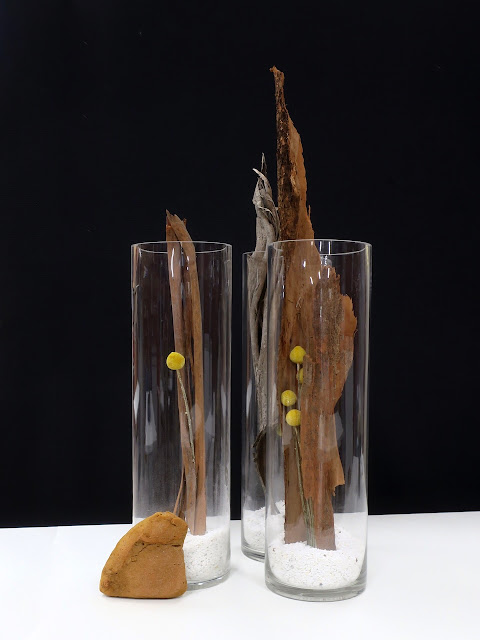A couple of weeks ago I failed to include a photo of my student, Maree's ikebana. Her exercise was the Book 4 lesson using "Dried, bleached or coloured material". The exercise does not preclude the addition of fresh materials. However, they should be secondary to the dried materials.
Maree chose some bark for the warm cinnamon colour of its inner surface, the outer surface being grey. She set the bark inside three large glass cylinders with crushed white stones in their base. This provided a mechanism for supporting the bark without the need for kenzans or other fixing mechanism. She added some Billy Buttons Craspedia canens which gave a bright yellow highlight to the ikebana. The large "rock" outside the left-hand cylinder is actually a piece of foam plastic that has become tan-coloured with age. At the critique I moved the three cylinders into this triangular configuration which gave depth to the work. It also made the ikebana able to be viewed from all around which was much more interesting.
The senior students at a recent class were given the exercise of making an ikebana using "summer flowers" in a suiban. In the context of the hot, dry summer conditions typical in the south of Australia, this can be quite a challenge.
This week's ikebana came about because a neighbour kindly offered me the seed head of some Artichoke Cynara cardunculus. A gift this ikebanist could not refuse. I have used three of the flowerheads, the largest to the left front and the other two partially hidden. Two flowerheads of the Golden rod cascade across the smallest of the Artichokes. Only partially seen at the back are some pale pink trumpets of our Belladonna lily.
The green galzed flower bowl is by Isabella Wang.
Greetings from Christopher
9th March 2024





.jpeg)

No comments:
Post a Comment